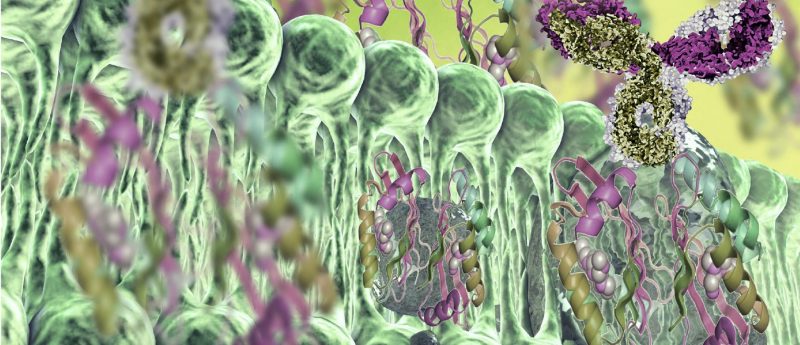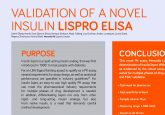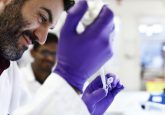Considerations for developing LBA: an interview with Tanja Jarhede

Tanja Jarhede, Senior Scientist, Mercodia AB, (Uppsala, Sweden)
1. Could you introduce yourself and explain what began your interest in LBA?
My name is Tanja Jarhede and I am a Senior Scientist at Mercodia AB (Uppsala, Sweden). I have a PhD in Biochemistry and 20 years’ experience of development of Ligand binding Assays (LBA) for bioanalysis (PK, biomarker and immunogenicity assays). I have also expertise in assay validation including thorough understanding of the regulatory guidelines from FDA/EMA, ICH and the points to consider document from C-path.
My interest in LBA started when I worked at Biacore AB (Uppsala, Sweden). It was amazing to be able to see the binding of a few molecules in real time in the Biacore™ instruments. When I later started to work with ELISAs at Mercodia, I was fascinated by the degree of sensitivity that can be achieved with well optimized assays using antibodies that are selective and have high affinity. For example, the Mercodia Lispro ELISA has a LLOQ (lower limit of quantification) of 35 pg/mL that corresponds to being able to measure 1g dissolved in a volume of 28,600,000 liters (approximately the volume in 11 Olympic swimming pools)! I feel that my daily work is meaningful since I use the LBAs to help customers in their development of new pharmaceuticals.
2. What is important to consider when developing an LBA such as an ELISA?
All assay development projects are different and have different challenges but below are some points that could be important to consider. First of all, you must define the intended use of the assay. If the assay is intended to be validated according to EMA and FDA bioanalytical method validation guidelines the recommendations in these guidelines needs to be considered already during the development.It is also important to have knowledge about the analyte (e.g. endogenous biomarker versus an exogenous drug, eventual presence of binding partners or soluble target protein in the samples, does the analyte form dimers or other oligomers, is the analyte highly hydrophobic or highly charged, is anything known about stability, expected concentrations etc.) before starting the development.
The material in the calibrators should be as similar as possible to the analyte in the sample. The material to the calibrators needs to be characterized e.g. identity, concentration, purity and stability. The stability of the analyte (e.g. freeze/thaw, bench top stability) is important to know early in the development since it will influence the achieved results during the development.
An iterative process is usually needed for developing and optimizing the assay. This includes, for example, finding suitable conditions for coating and conjugation, concentrations of reagents, incubation times and temperatures, buffer and washing procedures. It is important to use samples/controls that are as similar as possible to the expected samples to evaluate the optimization.
Parallelism experiments can be used during development, especially for endogenous analytes, as described by Tu and Bennett (Bioanalysis. 2017, 9(14):1107–1122) and Stevenson and Purushothama (Bioanalysis. 2014, 6(2):185–198). The parallelism experiments can give information about if a sample dilution curve is similar to the calibrator curve, that is that the calibrator material and samples interact similar with the reagents in the assay. The parallelism experiment will also give information about minimum required dilution (MRD), selectivity and estimation of LLOQ.
The concentrations chosen for the calibrators and control will depend on expected concentrations of the samples and the measuring range of the assay. There are recommendations for the number and concentrations of the calibrators and control if the assay should later be validated according to FDA and/or EMA guidelines. The curve fitting models used for LBAs are most often 4 or 5 parametric with appropriate weighting.
After the optimizations, a feasibility study is often conducted to show that the assay is ready for an eventual validation and sample analysis.
3. How does Mercodia’s portfolio of services help overcome the challenges of LBA?
Mercodia’s portfolio of services include custom production of reagents and buffer, LBA development, validation, sample analysis and reagent characterization. In all of these areas we use our know-how that we have gained from many years of developing and producing our own products, Mercodia ELISA kit for biomarkers within metabolic disorders.Production
At our facilities in Uppsala, Sweden we have extensive production capacities to be used in service projects. During decades we have produced solutions for the life science industry. We can produce buffers, assay components or full LBA kits etc. With production, QC and QA working closely together we can make sure that the process flows smoothly and effectively from start to finish. Control of critical reagents is fundamental to the quality and long-term performance of LBAs. Mercodia has comprehensive knowledge around critical reagent management processes to support assay needs throughout the lifecycle of drug development.Development
When we develop assays for customers, we start with setting up a design specification were we together summarize information about the analyte, the user need and intended use of the assay. Good communication between us and the customer is the key for successful assay development.The development can start from scratch by designing antigen binders and building an assay prototype. Mercodia use Biacore interaction analysis to choose antibodies/binders that are specific and can bind in pair (to be used in a sandwich ELISA). Development can also start by adapting or optimizing an already developed assay for a new intended use. Mercodia’s know-how of developing immunoassays provides a unique expertise within the LBA field. By utilizing proprietary buffers and matrix interference reagents and knowledge about choosing binders, coating, conjugation etc), accurate protein quantification can be achieved.
Validation
Depending on the intended use of the assay (e.g. pivotal study that require a regulatory decision making for approval or internal decision making), the level of validation is determined. This is performed using a risk-based approach and in collaboration with the customer. Mercodia has extensive experience in following guidelines from FDA, EMA, ICH and C-Path. We also take advantage of internal knowledge in validating our own commercial products. Mercodia takes an active part in the preparation of industry guidelines and White Papers concerning bioanalytical method validation (Bioanalysis. 2019 Apr;11(7):645–653).Sample analysis
Skilled laboratory technicians at Mercodia perform the sample analysis according to Good Laboratory Practice (GLP) and Standard Operating Procedures (SOPs).Characterizing the reagents
Characterizing the reagents is of utmost importance for good assay performance. Mercodia Reagent Characterization Service offers characterization of reagents with ELISA and/or surface plasmon resonance (SPR) using Biacore™ technology. The service can, for example, include studies to determine binding kinetics and affinity between binder and analyte.4. Where do you hope this field will be in 5–10 years’ time?
I hope that the guiding principles of 3Rs will be used more to reduce the use of animals for testing of new pharmaceuticals. For LBA validation and sample analysis that could mean using calibrators and controls prepared in buffer and dilution of samples with buffer instead of in animal matrix as a first hand alternative, if parallelism has been shown. Using single-plicate instead of duplicates for sample analysis could also be a standard in the future to reduce the sample volume for assays with adequate precision.I also look forward to more communication between clinical diagnostics and drug discovery regarding the validation and sample analysis of biomarkers. Since we are measuring the same thing but in different settings, we have a lot to learn from our different experiences. This could give us better understanding of the biomarkers and their role in disease as well as in drug development.
Finally, it is interesting to see what new applications and assay techniques that the future will bring. There is a need for assays with higher sensitivity, higher throughput and lower sample volumes but with the same quality as todays LBA. This could be one part of making the development of pharmaceutical faster, cheaper and better.



